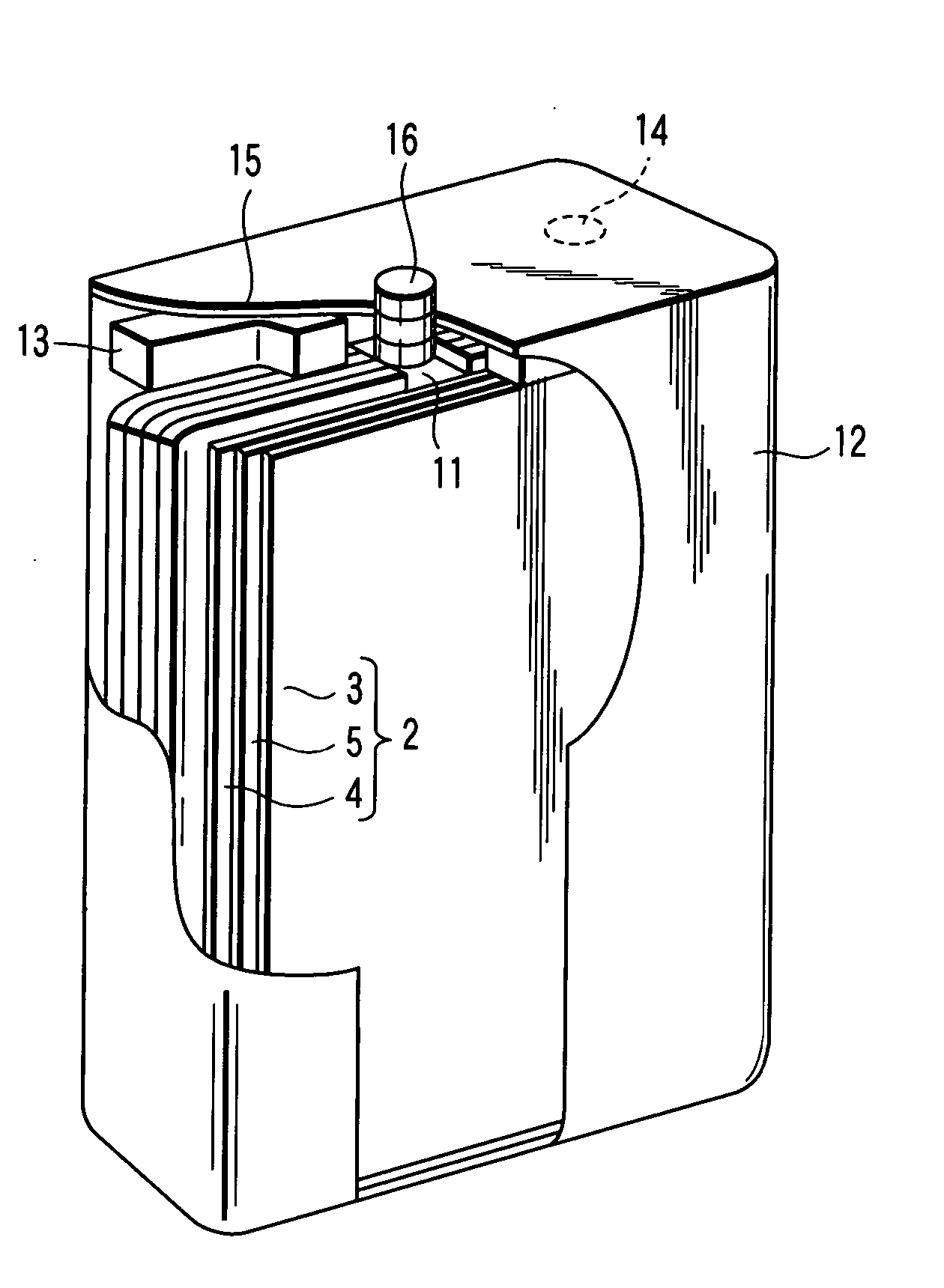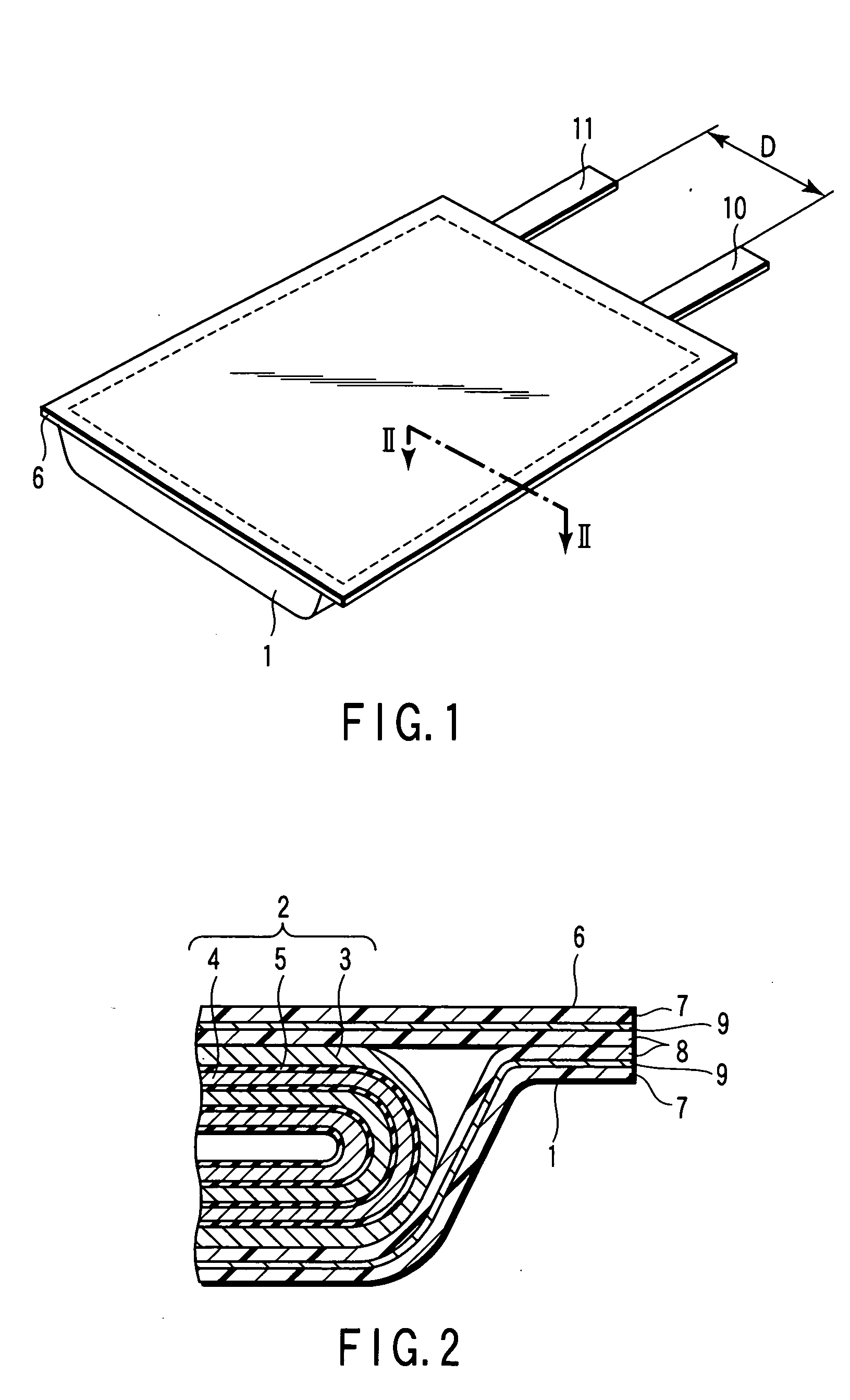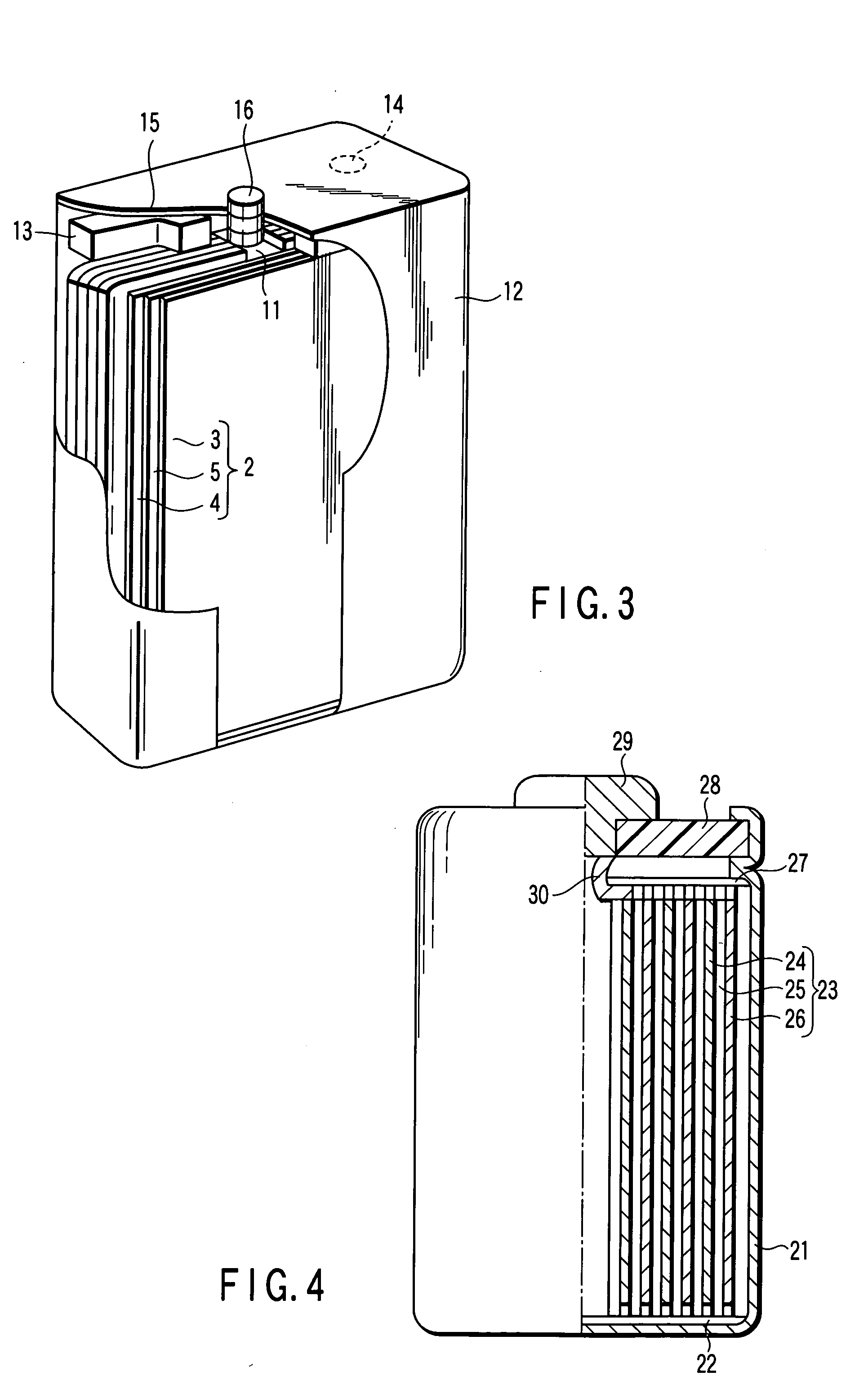Nonaqueous electrolyte secondary battery
a secondary battery and electrolyte technology, applied in the direction of non-aqueous electrolyte cells, cell components, sustainable manufacturing/processing, etc., can solve the problems of poor short circuits in internal circuits, and malfunction of electronic appliances, so as to suppress gas generation in initial charging and enhance initial charging and discharging efficiency
- Summary
- Abstract
- Description
- Claims
- Application Information
AI Technical Summary
Benefits of technology
Problems solved by technology
Method used
Image
Examples
example 1
[0189] To 90 wt. % of lithium cobalt oxide (LixCoO2, 0<x≦1) powder, 5 wt. % of acetylene black and dimethyl formamide (DMF) solution of 5 wt. % of polyvinylidene fluoride (PVdF) were added and mixed, and a slurry was prepared. The slurry was applied on both surfaces of a current collector made of aluminum foil of 15 μm in thickness, and dried and pressed, and thereby a positive electrode was fabricated in a structure having positive electrode layers carried on both surfaces of the current collector. The thickness of the positive electrode layer was 60 μm at one side.
[0190] As a carbonaceous material, powder of mesophase pitch-based carbon fiber heated at 3000° C. (layer spacing (d002) of (002) plane determined by powder X-ray diffraction being 0.336 nm) was used by 95 wt. %, and it was mixed with a dimethyl formamide (DMF) solution of 5 wt. % of polyvinylidene fluoride (PVdF), and a slurry was prepared. The slurry was applied on both surfaces of a current collector made of copper f...
examples 2 to 33
[0198] Thin type nonaqueous electrolyte secondary batteries were manufactured in the same manner as in Example 1, except that the composition of the nonaqueous solvent, type of the electrolyte, and electrolyte concentration were set as shown in Tables 1 to 3.
example 34
[0199] In a nonaqueous solvent having the same composition as in Example 1, lithium tetrafluoro borate (LiBF4) and lithium hexafluoro phosphate (LiPF6) were dissolved to a concentration of 0.2 mol / L (LiBF4) and 1.0 mol / L (LiPF6) respectively, and a liquid nonaqueous electrolyte was prepared.
[0200] A thin type nonaqueous electrolyte secondary battery was prepared in the same manner as in Example 1, except that the above liquid nonaqueous electrolyte was used.
PUM
| Property | Measurement | Unit |
|---|---|---|
| distance | aaaaa | aaaaa |
| distance | aaaaa | aaaaa |
| thickness | aaaaa | aaaaa |
Abstract
Description
Claims
Application Information
 Login to View More
Login to View More - R&D
- Intellectual Property
- Life Sciences
- Materials
- Tech Scout
- Unparalleled Data Quality
- Higher Quality Content
- 60% Fewer Hallucinations
Browse by: Latest US Patents, China's latest patents, Technical Efficacy Thesaurus, Application Domain, Technology Topic, Popular Technical Reports.
© 2025 PatSnap. All rights reserved.Legal|Privacy policy|Modern Slavery Act Transparency Statement|Sitemap|About US| Contact US: help@patsnap.com



